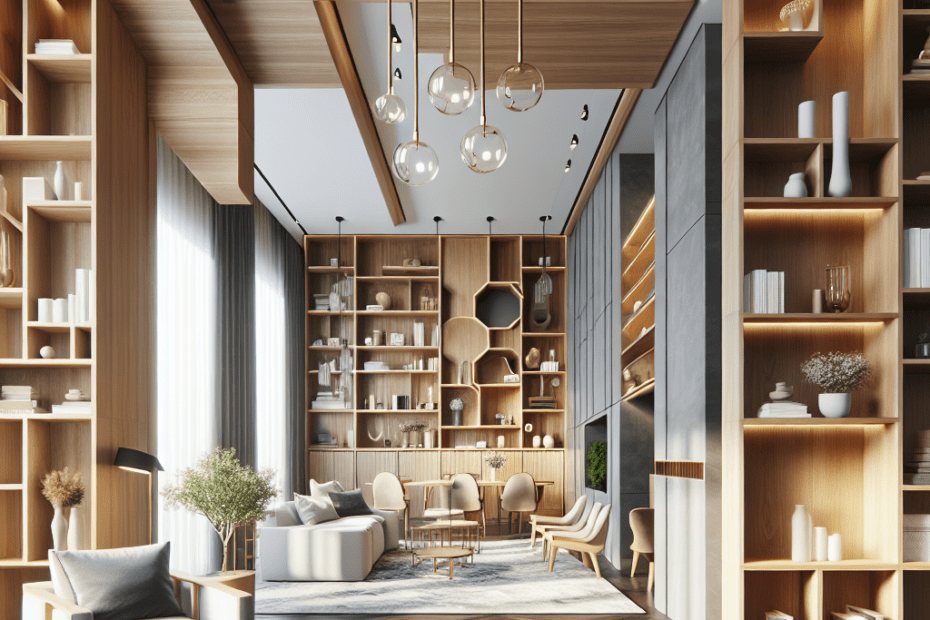“`html
The Power of Custom Built-Ins in Contemporary Design
Custom built-ins in design have gained considerable popularity in contemporary interiors. They provide practical storage solutions and contribute significantly to the aesthetic appeal of a home. By integrating furniture directly into the architecture, they create a seamless look that enhances the functionality of living spaces. Whether it’s a cozy reading nook or an organized home office, custom built-ins can transform any room into a personalized haven.
The Rise of Functional Aesthetics
In recent years, the demand for functional yet stylish home designs has soared. According to a survey by the National Association of Home Builders, 64% of new custom homes include built-ins as essential features. As people spend more time at home, they seek environments that reflect their taste while maximizing efficiency and comfort.
Custom built-ins play a crucial role in this shift towards functional aesthetics. They allow for optimal use of available space by turning awkward corners and empty walls into integral parts of the home’s design. Unlike freestanding furniture, built-ins provide a tailored fit that complements the architectural layout, making them both a practical and visually appealing addition to modern homes.
Key Benefits of Custom Built-Ins
| Benefit | Description |
|---|---|
| Space Optimization | Built-ins utilize unused spaces effectively, making smaller areas feel larger and more open. |
| Personalized Design | Designs can be customized to meet individual needs, ranging from bookshelves to entertainment centers. |
| Increased Home Value | According to a report by Zillow, homes with built-ins can sell for 10% more than homes without. |
| Streamlined Appearance | Built-ins create a cohesive look by minimizing clutter and integrating storage solutions. |
Applications of Custom Built-Ins
Custom built-ins thrive in various areas of home design. Living rooms often feature built-in shelving units that elegantly display books, art, and collectibles. In kitchens, built-ins can neatly house appliances, pantry items, and cooking utensils, streamlining the space. Bedrooms benefit from custom closets and wall units, offering ample storage while maintaining a clean and organized look.
Home offices have become increasingly prevalent with the rise of remote work. This shift highlights the importance of custom built-ins in creating efficient workspaces equipped with desks, filing cabinets, and drawers that cater to specific occupational needs. Crafting personalized learning environments for children with integrated desks and storage for educational materials further showcases the adaptability of built-ins.
Incorporating Technology with Built-Ins
The integration of technology into home design is inevitable. Custom built-ins are enabling this trend by incorporating tech-friendly features such as hideaway charging stations, smart storage solutions, and seamless cable management systems. As the Internet of Things (IoT) continues to expand, built-ins are expected to evolve, supporting smart home devices and enhancing the user experience.
Custom Built-Ins: A Sustainable Choice
Sustainability is a growing concern among homeowners and designers alike. Custom built-ins support sustainability by promoting the use of eco-friendly materials and reducing the need for excess furniture. Additionally, by tailoring designs to specific spaces, waste is minimized during the construction process. Homeowners can choose recycled woods, low-VOC finishes, and other sustainable materials to further their commitment to eco-friendly living.
Challenges and Considerations
Designing custom built-ins requires careful planning and consideration. Initial costs can be higher than purchasing standard furniture, as they involve specialized craftsmanship. However, the long-term benefits often outweigh these expenses, contributing to increased property value and satisfaction.
Homeowners should collaborate with skilled designers and carpenters who understand both the creative and practical aspects of built-in design. Attention to detail, such as matching existing decor and ensuring structural integrity, is crucial to a successful integration.
Key Takeaways
- Custom built-ins in design optimize space while enhancing home value and aesthetics.
- They offer personalized solutions for various home areas, including living rooms, kitchens, bedrooms, and home offices.
- Custom built-ins are aligned with trends in technology integration and sustainability.
- Collaboration with professionals ensures a seamless design and installation process.
FAQ
-
What are custom built-ins?
Custom built-ins are furniture or storage solutions designed to fit specific spaces directly into a home’s architecture.
-
Do custom built-ins increase home value?
Yes, homes with well-designed built-ins often have enhanced aesthetic appeal and increased market values.
-
Are built-ins suitable for small spaces?
Absolutely! Built-ins maximize space and can make small areas appear larger and more functional.
-
Can built-ins incorporate technology?
Yes, they can include features like cable management systems and hidden charging docks for a tech-friendly environment.
-
How can I ensure my built-in is environmentally friendly?
Opt for sustainable materials, such as reclaimed wood, and low-VOC finishes to make eco-friendly choices in your design.
“`
